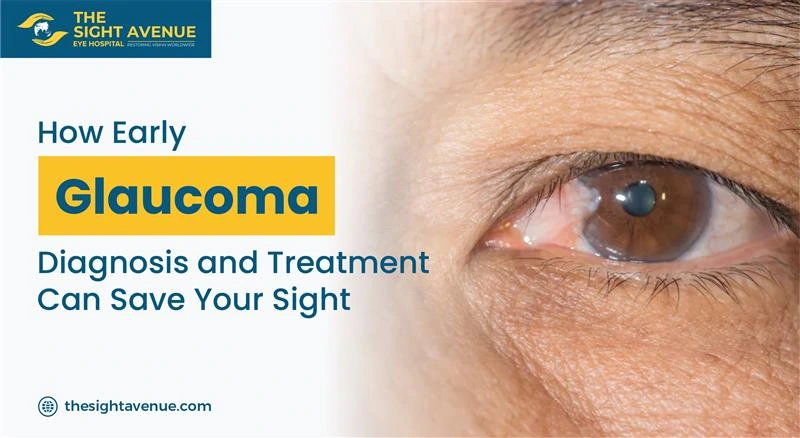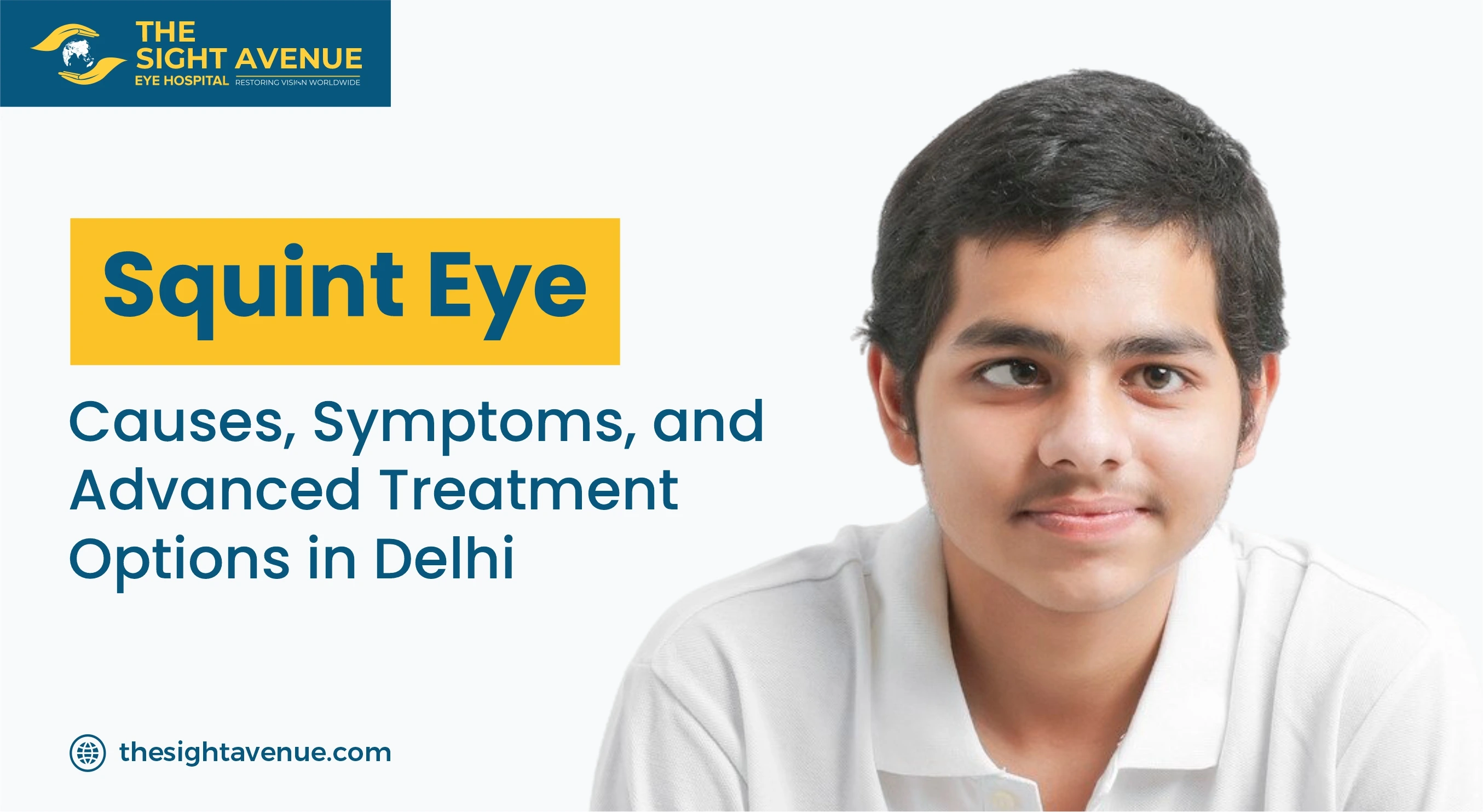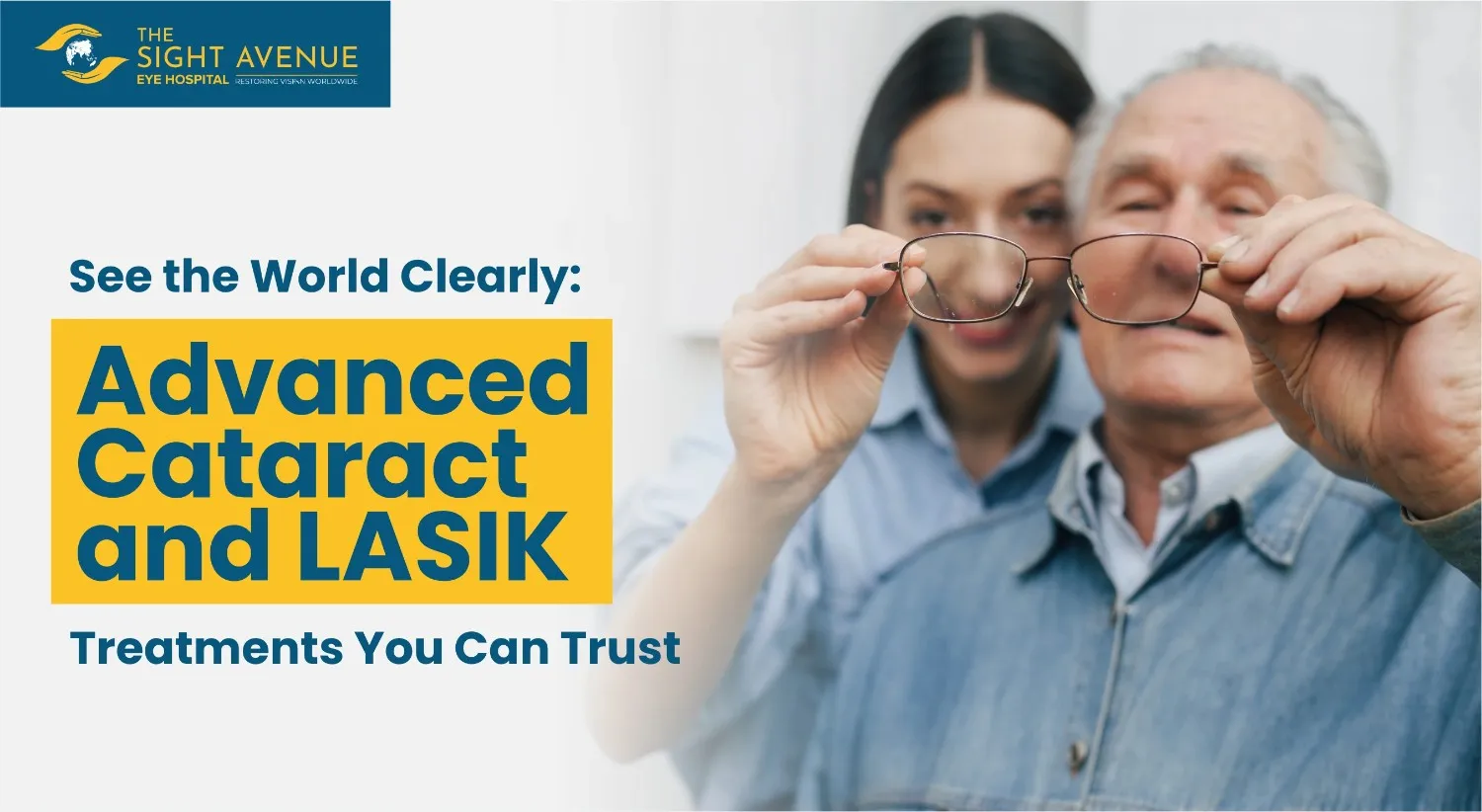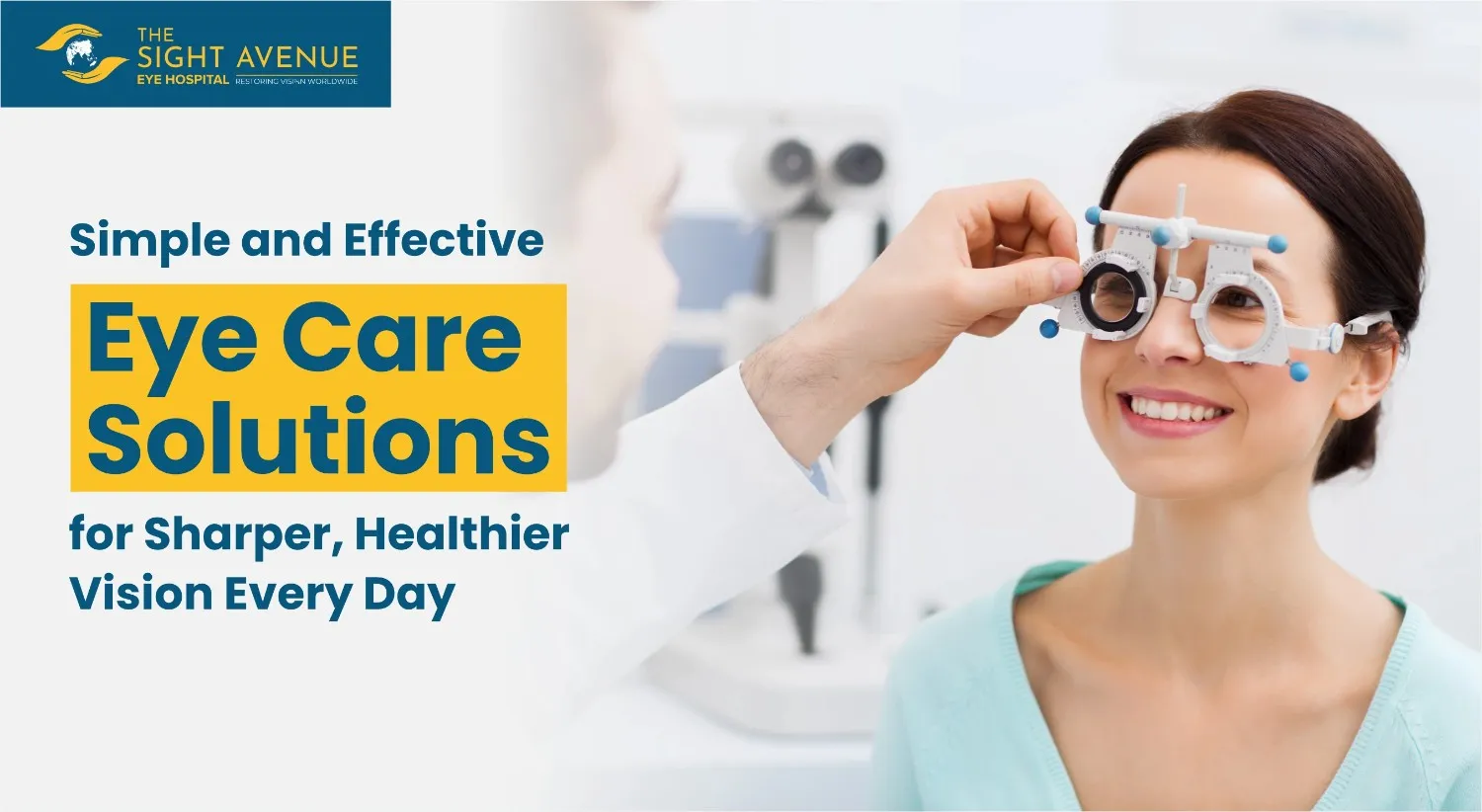Understanding Cataracts – Causes, Symptoms & Treatments

Cataract is a common eye condition that affects millions of people in the world. Cataracts are often found in old age people who are over 60 or going to cross middle age. This condition interrupts a person's vision and makes them feel like they are seeing the world from cloudy vision. With the help of this blog, you may get all the information about cataracts, from what cataracts are to the treatment of cataracts, everything that you need to know.
What are Cataracts?
Cataracts are a condition that occurs when the eye's natural lens becomes cloudy. Behind the iris, the colored portion of the eye is a translucent structure called the lens. It helps to focus light onto the retina (the light-sensitive tissue at the back of the eye), allowing us to see clearly. When the lens becomes cloudy, it can cause blurry vision, glare, and other visual problems. Cataracts often form slowly and may not initially manifest any symptoms. However, as the cataract grows, it can significantly affect vision and quality of life.
Types of Cataracts
There are several types of cataracts, including:
1. Age-related cataracts
The most prevalent kind of cataracts are those brought on by ageing. They occur due to the natural aging process and are more common in people over the age of 60. There are many ways you can prevent age-related vision loss from happening.
2. Congenital cataracts
Congenital cataracts start at birth or start to appear soon after. They may develop as a result of a pregnancy-related infection or hereditary causes.
3. Traumatic cataracts
Traumatic cataracts occur due to an injury or trauma to the eye. In the case of the majority of traumatic cataracts, their nature and clinical course depend on the mode of damage and the strength of the capsular bag.
4. Secondary cataracts
Secondary cataracts can develop after surgery for other eye problems, such as glaucoma or retinal detachment. They can also be caused when you have severe dry eyes.
5. Nuclear cataracts
They are formed in the middle of the lens which causes the nucleus/center to become yellow or brown.
6. Cortical cataracts
They form around the edges of the nucleus and are usually wedge-shaped.
7. Posterior capsular cataracts
They form faster than the rest of the two types, affecting the back of the lens.
Causes of Cataracts
The most common cause of cataracts is aging. As we get older, the proteins in the lens can clump together and cloud the lens, leading to cataracts. The following are additional elements that could raise the likelihood of acquiring cataracts:
- Diabetes
- Smoking
- Exposure to UV radiation
- Family history of cataracts
- Certain medications (such as steroids)
Related Blog: Laser Treatment for Diabetic Retinopathy
Symptoms of Cataract
The symptoms of cataracts can vary depending on the type and severity of the cataract. However, some common symptoms of cataracts include:
- Blurry or cloudy vision
- Difficulty seeing at night
- Sensitivity to light and glare
- Colors may appear faded or yellowed
- Need for frequent changes in glasses or contact lens prescription
Diagnosis for Cataracts
The most accurate technique to identify cataracts is through a thorough eye exam. For examination, you should visit the best hospital for cataract surgery in delhi. During the exam, your eye doctor will perform several tests to evaluate the health of your eyes and the severity of the cataract. These tests may include:
- Visual acuity test
- Dilated eye exam
- Tonometry (to measure eye pressure)
- Slit-lamp exam
Related Blog: How Diabetes Can Affect Your Vision?
Treatment for Cataracts
If you have cataracts, the only way to remove them is through surgery. However, if your cataracts aren't affecting your vision too much, you may not need surgery right away. You should consult with the best eye hospital in delhi.
Non-Surgical Treatment Options
There are no non-surgical treatments that can cure or reverse cataracts. But there are some things you can do to manage your symptoms and slow the progression of the condition:
- Eyeglasses: If you have mild cataracts, your vision can often be improved by wearing contact lenses or new eyeglasses suggested as per prescription. This won't cure your cataracts, but it can help you see better.
- Better Lighting: Increasing the amount of light in your home can make it easier to see, especially if you're trying to read or do other close-up work.
- Magnifying Lenses: Special magnifying lenses can help you see better if you have difficulty with reading or other close-up tasks.
- Anti-Glare Sunglasses: These can be helpful if you're bothered by bright sunlight or glare.
Surgical Treatment Options
Surgery is the only way to remove cataracts. To replace the clouded lens with a clear artificial lens, cataract surgery aims to remove the cloudy lens.
There are two types of cataract surgery:
- Phacoemulsification: This is the most popular method of cataract surgery. It involves making a small incision in the eye and using ultrasound waves to break up the cloudy lens. The pieces are then suctioned out of the eye, and a new artificial lens is put in its place.
- Extracapsular Surgery: This type of surgery is used when the cataract is too dense to be removed with phacoemulsification. In this procedure, a larger incision is made in the eye, and the cloudy lens is removed in one piece.
After surgery, you'll need to use eye drops to help prevent infection and reduce inflammation. Your ophthalmologist will give you specific instructions on how to care for your eye after surgery.
Related Blog: Difference Between LASIK and Cataract Surgery?
Risks and Complications
Like any surgery, cataract surgery carries some risks. The most common complications include:
- Infection: This can be treated with antibiotics.
- Swelling: This can be treated with eye drops.
- Bleeding: This is rare but can occur. If it happens, your doctor will stop the bleeding.
- Retinal Detachment: This is a rare complication that can cause vision loss. If it happens, you may need more surgery to repair the retina.
It's important to talk to the best eye doctors in Delhi about the risks and benefits of cataract surgery in Delhi and whether it's the right option for you.
Prevention of Cataracts
While cataracts can't be completely prevented, there are steps you can take to reduce your risk of developing them. These pointers will help you avoid developing cataracts:
1. Protect your eyes from UV rays
Your chance of acquiring cataracts may increase if you are exposed to UV rays from the sun. To protect your eyes, wear sunglasses that block 100% of UV rays when you're outdoors, even on cloudy days.
2. Maintain a healthy diet
Eating a healthy diet rich in fruits, vegetables, and other nutrient-dense foods can help protect your eyes and reduce your risk of cataracts. Some studies have shown that a diet high in antioxidants, such as vitamins C and E, may be especially beneficial.
3. Manage chronic health conditions
Conditions such as diabetes, high blood pressure, and obesity can increase your risk of developing cataracts. Your risk can be decreased by treating these disorders with medication, making lifestyle adjustments, and getting regular checkups.
4. Quit smoking
Smoking is a major risk factor for cataracts and other eye diseases. If you smoke, quitting can help reduce your risk of developing cataracts, as well as other health problems.
5. Get regular eye exams
Regular eye exams can help detect cataracts and other eye problems early, when they're easier to treat. Be sure to do some eye exercises and schedule regular check-ups with your eye doctor, especially as you get older.
Regular eye checkups may help you to recognize the condition in early phase so that you can take the good treatment at the right time.
reduce the risk of developing cataracts, and early detection helps you to take the right treatment at the right time, which helps to prevent vision loss.
Conclusion
Cataracts are a normal part of getting older, but it doesn't sound good for a middle-aged person. Because no one wants to lose their vision, whether they are old or young. Everyone wants to see the world the same as others; that's why it's important to recognize cataract symptoms so that you can get the right treatment at the right time and save your vision.
If you or your loved ones are noticing early signs of cataracts, don’t wait — consult the experts at The Sight Avenue Hospital – Best Eye Hospital in Delhi – and protect your precious vision today.
FAQs about Cataracts
A. The three forms of cataracts are nuclear, cortical, and subcapsular.
A. The early indicators of cataracts include blurred or hazy vision, difficulty seeing at night, increased sensitivity to glare, and faded colors.
A. The typical age of onset of cataracts is around 60 years old, but they can develop at any age.
A. Cataracts are treated with surgery, which involves removing the cloudy lens and replacing it with an artificial lens.
A. To prevent cataracts, you can protect your eyes from UV rays, maintain a healthy diet, manage chronic health conditions, quit smoking, and get regular eye exams.
A. Some natural ways to lessen cataracts include eating a healthy diet rich in antioxidants, wearing sunglasses to protect your eyes from UV rays, and managing chronic health conditions.
A. Although injury, illness, or genetics can also be to blame for cataracts, aging is the most frequent cause.
A. Cataract surgery is usually painless and done under local anesthesia. Most people report little to no discomfort during the procedure.
A. The cost of cataract surgery in India can vary depending on several factors, such as the type of surgery, the hospital or clinic, and the location. On average, the cost of cataract surgery in India ranges from Rs. 20,000 to Rs. 80,000 (approximately $270 to $1,100 USD) per eye.
A. Cataract phase 4 refers to an advanced stage of cataracts where the lens is severely clouded and vision is greatly impaired. At this stage, cataract surgery is usually the only option for improving vision.
A: Age is the most common risk factor for cataracts, but other factors include smoking, excessive alcohol consumption, obesity, and a family history of cataracts.
A: Most people can resume normal activities within a few days to a week after cataract surgery. However, it can take several weeks for your vision to fully stabilize and for any side effects to subside.
A: It depends on your individual situation. Some people may still need glasses after cataract surgery, especially for reading or close-up tasks. Your doctor can give you more information based on your specific case.
Eye problems? Searching for an eye specialist near me in Delhi NCR? The Sight Avenue has 5 eye clinics in Delhi NCR. Contact us today!
Eye Hospital in Delhi
- The Sight Avenue
- The Sight Avenue
- The Sight Avenue
E-82-A, Ground Floor, Hansraj Gupta Rd, Greater Kailash I, New Delhi, Delhi 110048
Email:enquiry@thesightavenue.com
Tel : 011-4666 0666
Mob : +91-8883330799
Fortis Hospital, Escorts Okhla, New Delhi
Fortis Hospital, Vasant Kunj, New Delhi
Recent Post





